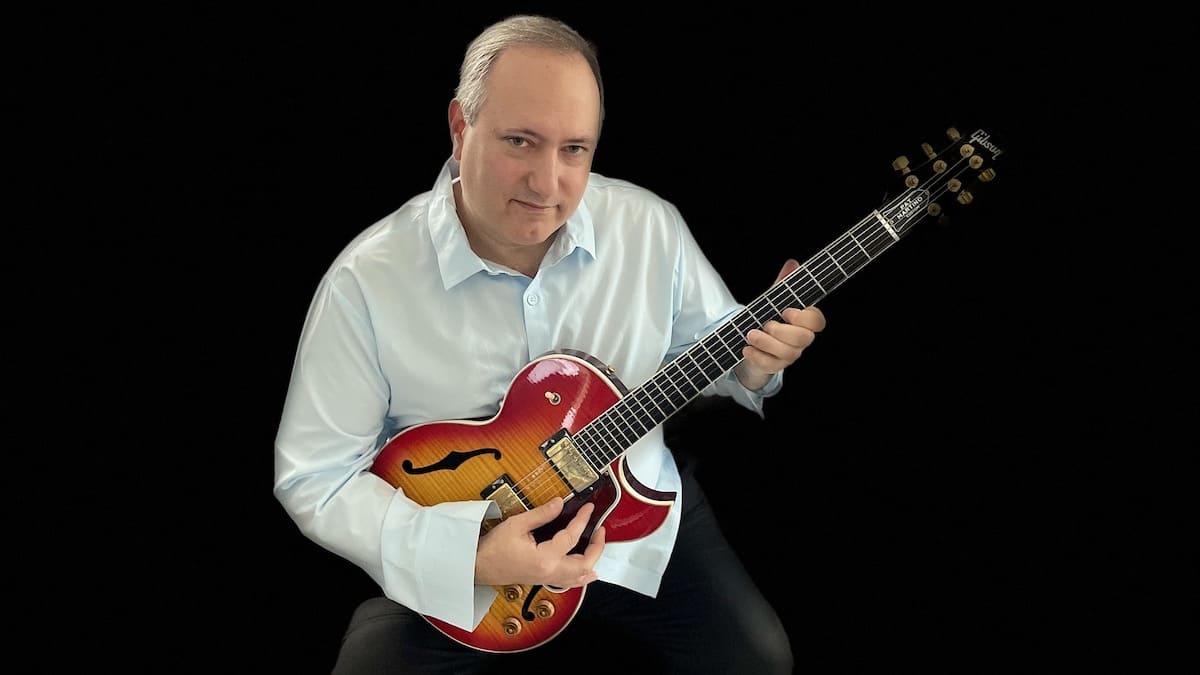Jazz Guitar Lessons
Looking For Endless Blues Inspiration?

JGT contributor Jim Josselyn takes a look at an altered minor blues and how to use modern chords in this timeless format to derive something new.
A couple of years ago the great jazz guitarist Rodney Jones shared a unique and really interesting turnaround he got from the legendary saxophonist and arranger Oliver Nelson with me. One day as I was playing I came up with a sound that intrigued me, a way of playing two suspended chords over a bass note that really moved me. One of those moments where you find something new that you know has the magical “it”, whatever that it is.
Immediately, as I often do, I heard this new sound in a blues context, but when I played it up a fourth as in conventional blues progressions I could hear that didn’t work. So I tried moving it up a minor third and heard it. And when I needed a turnaround to finish the tune, I implemented the chords Rodney had just given me, and the title track of my new recording “Shape Shifter” was born. When the student is ready the teacher appears, indeed.
I’ve been very fortunate to be around and study with some of the great guitarists and musicians in jazz. First and foremost Ted Dunbar, Pat Martino, Rodney Jones, and Jimmy Heath. Two of the many things these master musicians have in common are a deep and profound love of harmony and the blues.
In my writing, I’m very conscious of this and have certain chords I love and favor including the minor 9, minor 11, 7#9, major 7b5, and suspended or poly chords primary among them. Combining these chord types with others in non-traditional or nonfunctional ways, like Wayne Shorter or Joe Henderson, gives the music the modern or “impressionistic” sound I love to hear. The blues keep it rooted in the tradition.
One of the ways I write, and the way Shape Shifter came about is to create a chord progression I like. For me that means it has to be unique, compelling, have at least one or two left turns, something that gives it its own character. When I have this basic structure and form I write a melody over the changes. In hearing the Shape chords they felt like fourths and fifths, pentatonic and the blues, a magical combination to me. In example 1, the lead sheet, we see the melody line starts with a descending figure with a fourth, a fifth, and a minor pentatonic scale-type riff. This line is slightly varied for the move up to Ab minor and then the repetition back in F completes the first part of the tune. For the Oliver Nelson turnaround, the melody just simply follows the chords, again in that Wayne Shorter style of complex chord/simple melody type of writing.

In example 2 we see the harmony, all easy guitar shapes playable in the first eight frets. C and Bbsus over F in the bass can be heard as an F minor tonality and so when we move it up a minor third, we have an Ab minor sound. The turnaround also features one of my favorite compositional and arranging techniques, note retention. The F note on top of the chord stays constant through the Csus, Abm/Db, Dm11, and Ebsus chords in the first and second endings. This technique is ubiquitous in modern jazz harmony, is a great way to tie together these complex chromatic resolutions and one you should use often if you’re composing modern jazz. Take a deep look at these sounds and shapes and if they are new to you master them. In the next article, we’ll take a look at my solo over the changes and I’ll share some ideas for practice.

Speaking of practice, the blues has been an endless wellspring of inspiration for me. I hear it in all my favorite players. I know I can always improve my blues playing and when I haven’t written anything new in a while I know if I start playing through blues chords or lines I’ll find an idea. It never fails. I hope the blues can and will be such an inspiration for you as well.
Jim Josselyn is a jazz guitarist, composer, and teacher in New Jersey. If you have any questions, would like to purchase the album, or take a lesson contact Jim at The School of Music and Drama. His group is online at facebook.com/jimjosselyngroup
Subscribe to Jazz Guitar Today – it’s FREE!
-
Jazz Guitar Lessons2 weeks ago
New JGT Guitar Lesson: Analyzing “Without A Song”
-
Jazz Guitar Lessons4 weeks ago
New JGT Guitar Lesson: Considering “Falling Grace”
-
Artist Features1 week ago
New Kurt Rosenwinkel JGT Video Podcast – July 2024
-
Artist Features2 weeks ago
JGT Talks To Seattle’s Michael Eskenazi



















